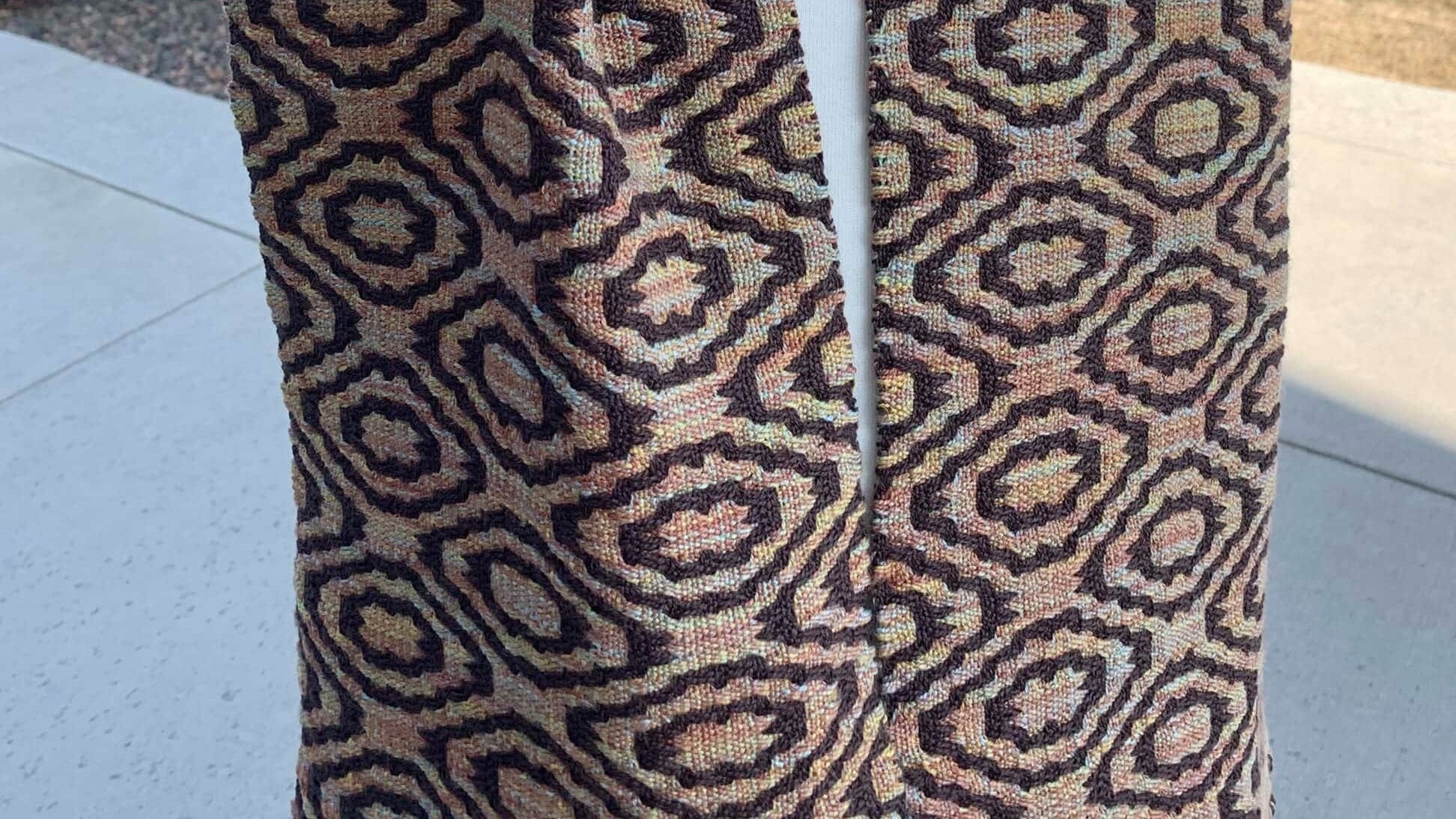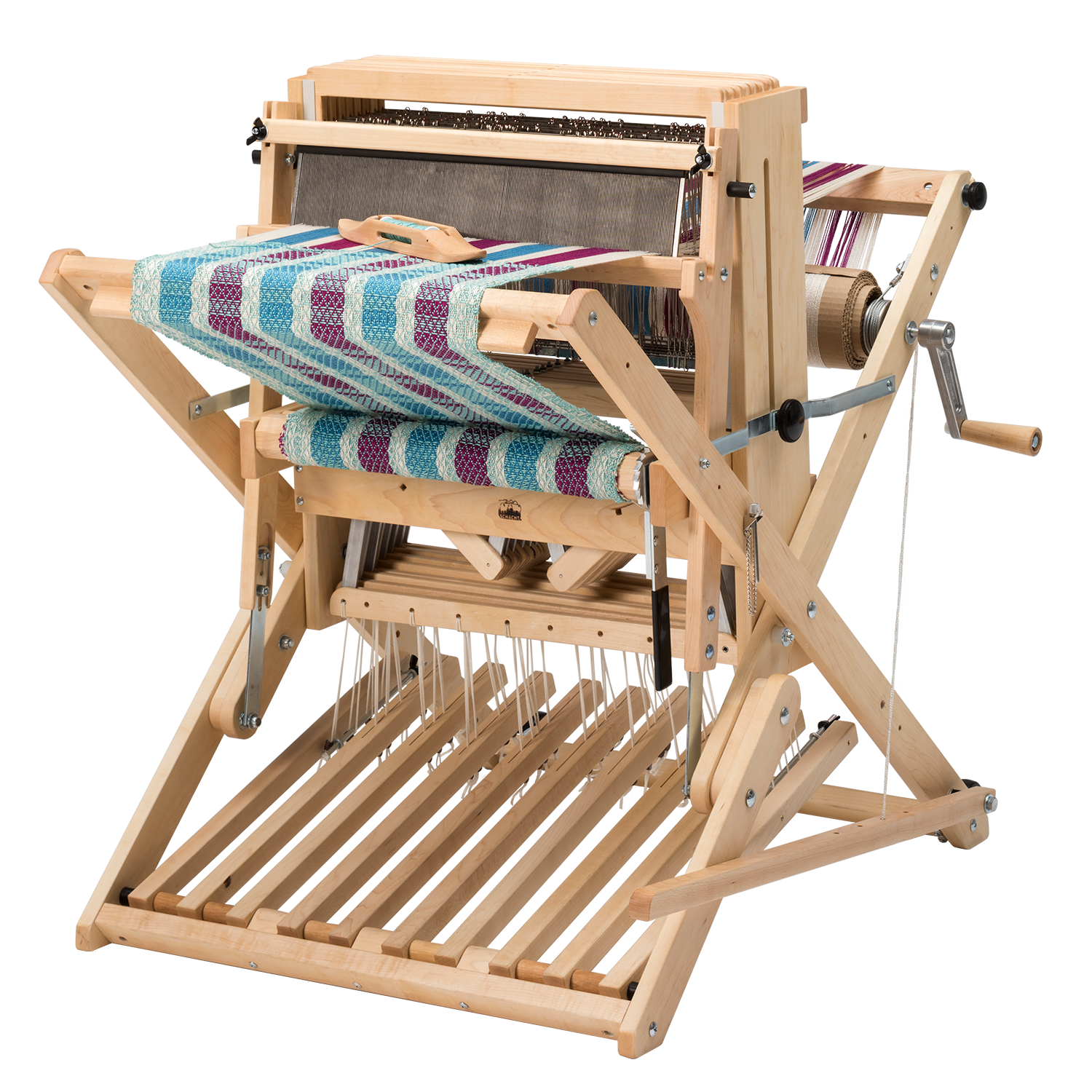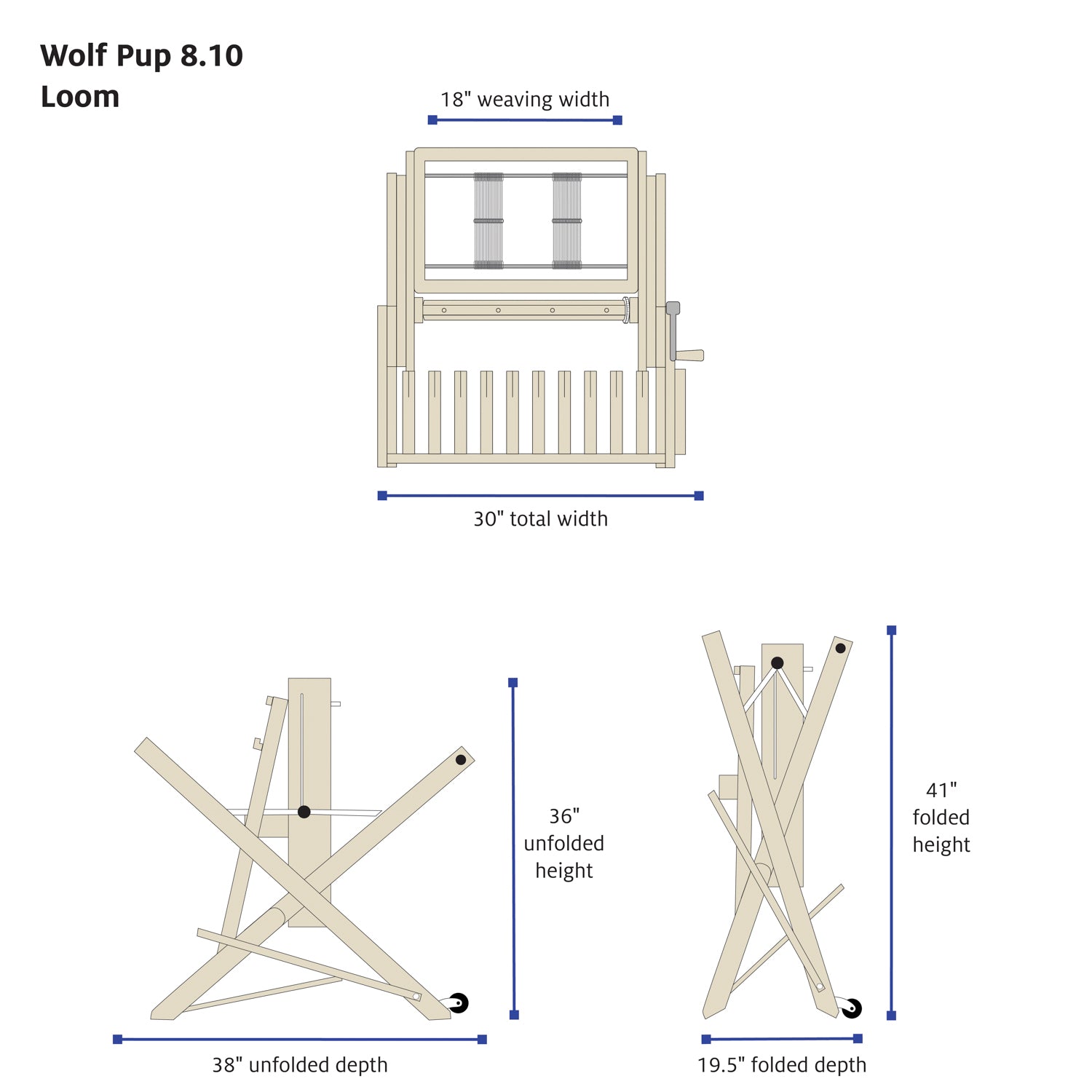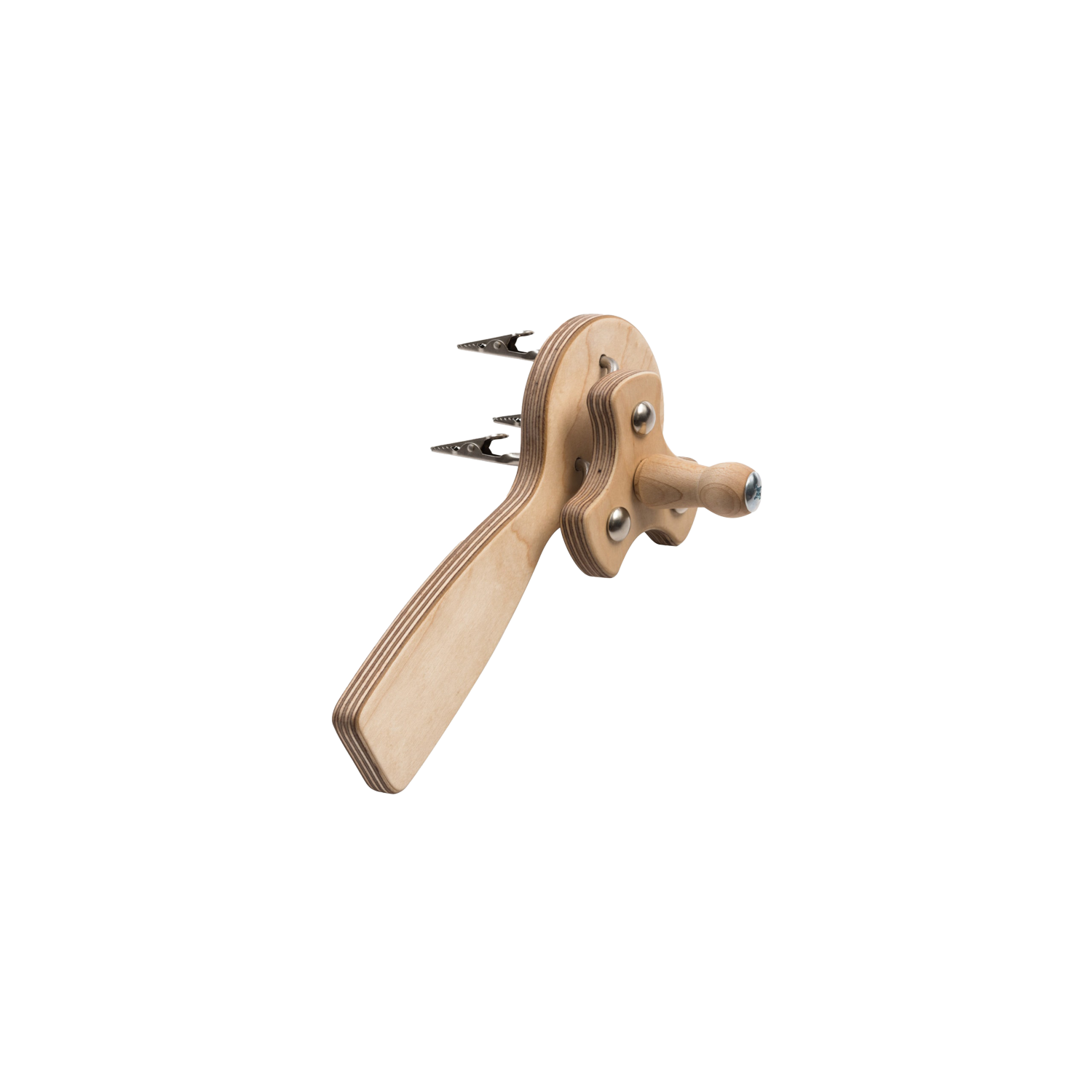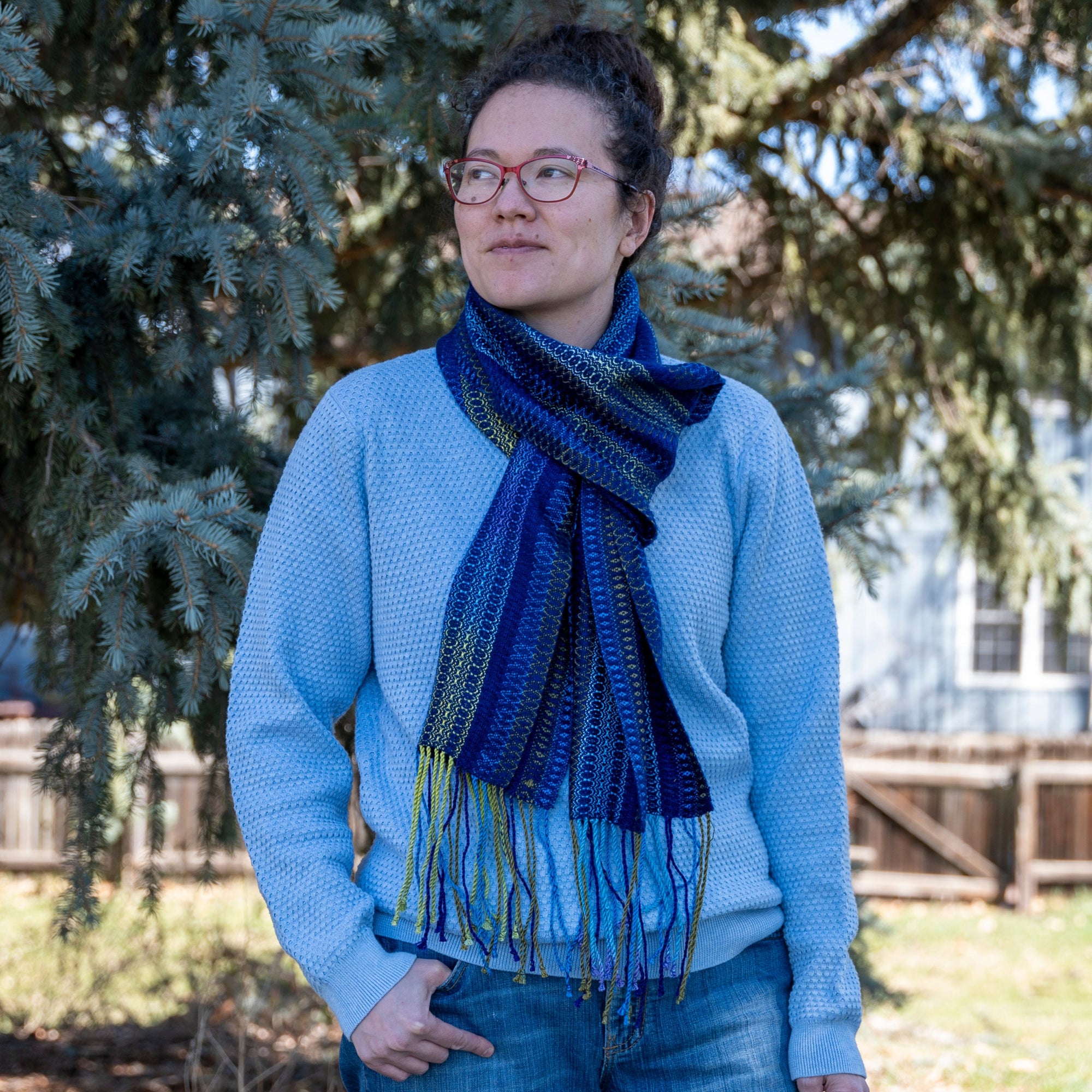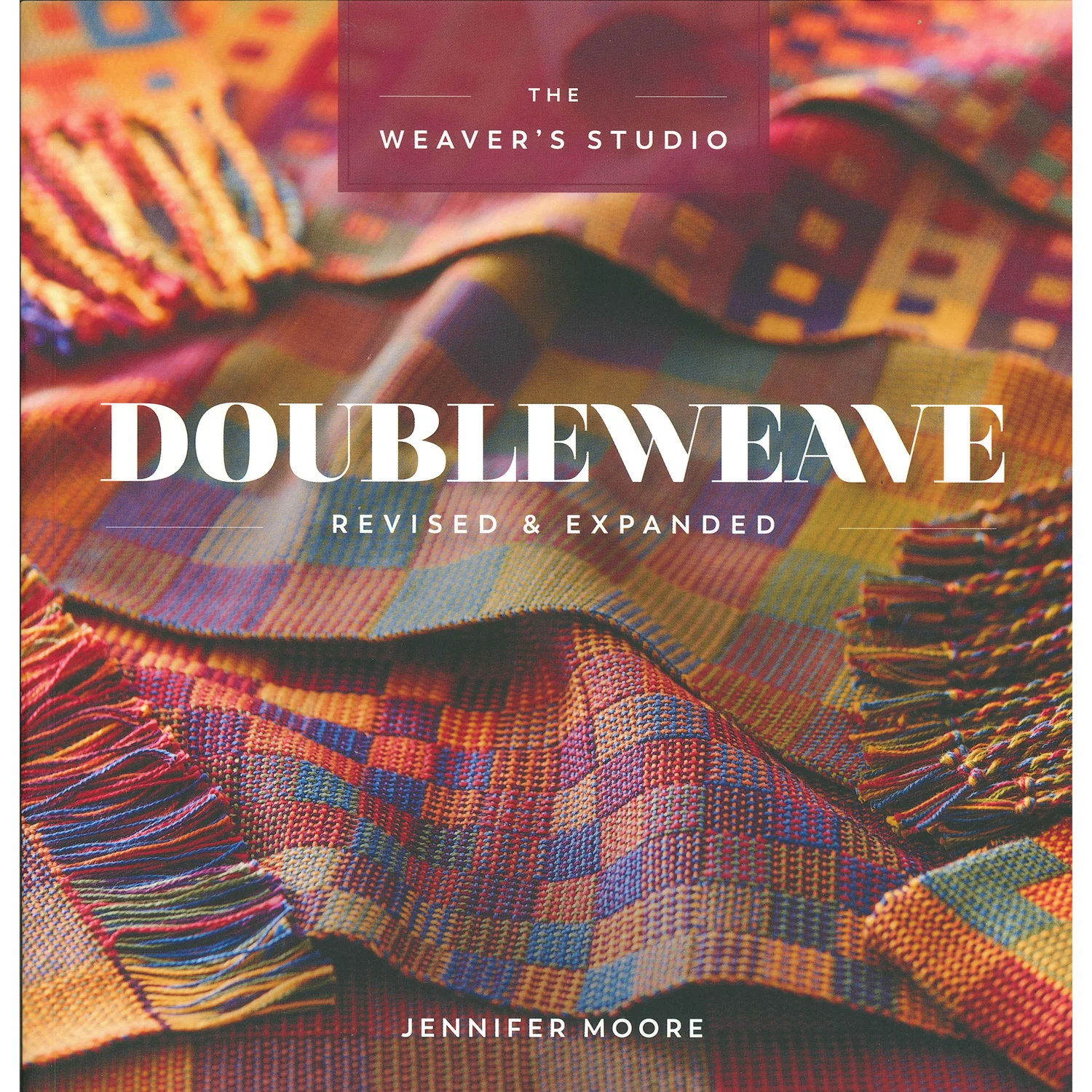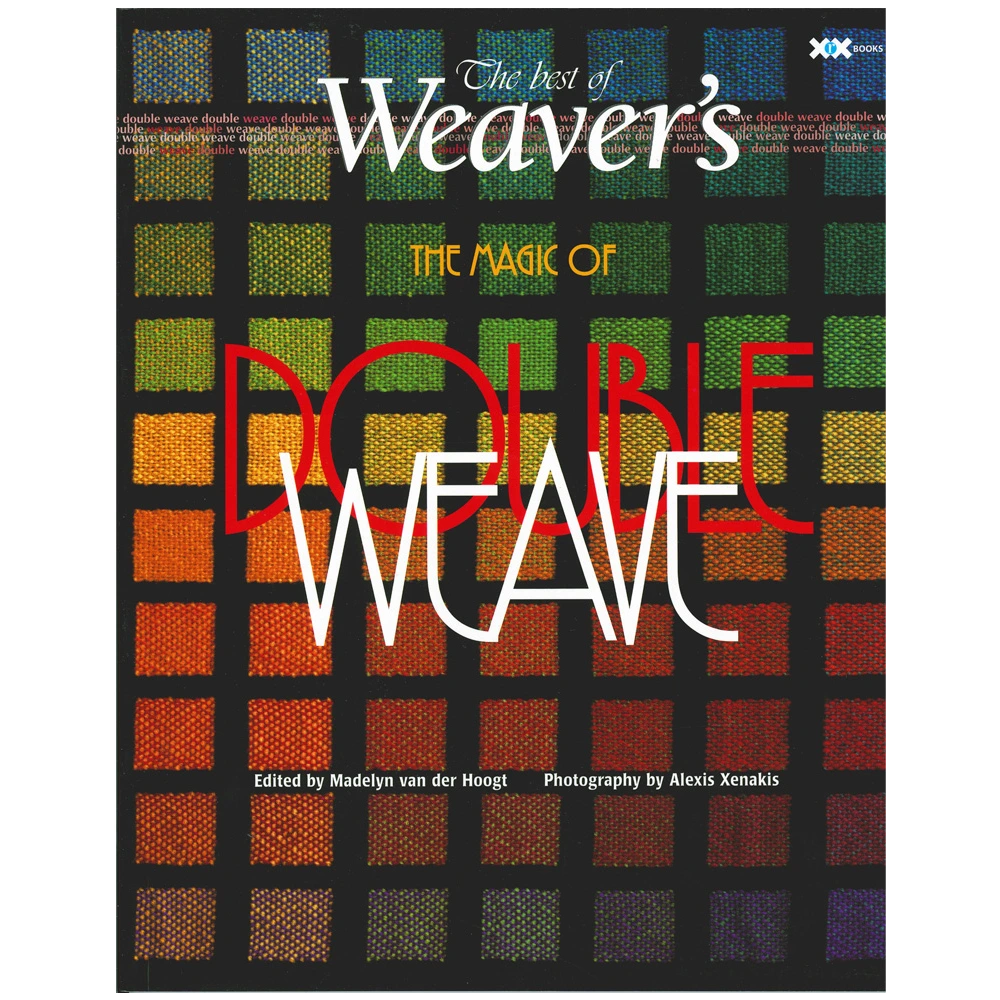Manor Garden Scarf in Deflected Doubleweave
Designed and woven by Anu Bhatia
Last year, right before the pandemic put us under lockdown, I visited the United Kingdom, not once but twice! Even though it was the peak of winter, London and surrounding areas looked lush green. On our bus ride from central London to Bristol, I was mesmerized by the rolling green pastures and meadows on both sides of the highway. Most impressive were the manor-type houses and their gardens with boxwood hedges neatly trimmed in geometric shapes. It was a lovely sight. With those images still fresh in my mind, I designed the Manor Garden scarf in deflected doubleweave on my new Mighty Wolf. I used two wool and silk laceweight yarns in contrasting colors for warp and weft.
What is Deflected Doubleweave?
Deflected doubleweave is one of my favorite weave structures. Instead of alternating one warp thread and one weft thread from each layer (as in typical layer-exchange doubleweave), two or more threads from each layer alternate. For this scarf, we'll alternate groups of four and six threads. Groups of warp and weft threads therefore float over and under groups from the other layer. When the fabric is removed from the loom and wet-finished, the threads deflect to form soft and curvy lines, and the designs on the face and back of the fabric are very different from each other.
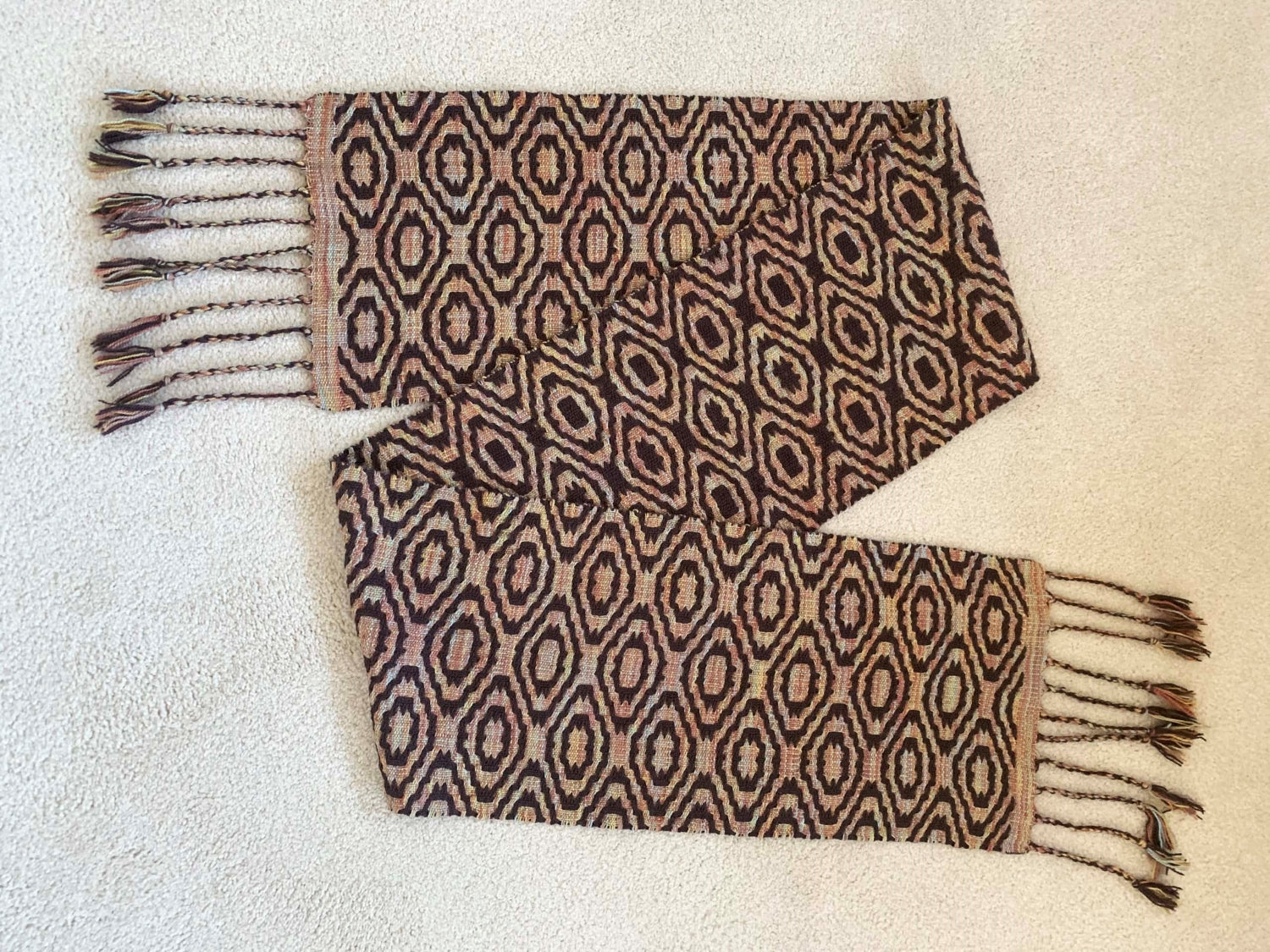
On my Mighty Wolf 8-shaft loom, I could design a four-block pattern with each threading block using two shafts for plainweave (e.g., Block A = 1-2-1-2). The blocks usually have an even number of ends, since odd numbered groups require a different threading plan. To add interest and balance color distribution, I used 6-ends per block in Blocks A and C and 4-ends/block in Blocks B and D.
Project Specs
Finished size: 67" x 9" excluding 5-1/2" twisted fringe on each end
Woven length: 72" (measured under tension on the loom)
Weave structure: deflected doubleweave
Warp length: 3 yds (allows 70 to 72" for weaving, 5" for take-up, 36" for loom waste and fringes)
Total warp ends: 218 ends (92 Cocoa and 126 Aurora), including doubled floating selvedges (Cocoa) on each edge
Width in reed: 10.7"
EPI: 20 (2 ends/dent in 10-dent reed)
PPI: 20
What You'll Need
- Juniper Moon Farm Findley (laceweight, 50% silk and 50% merino wool) in Cocoa, 629 yds total (276 yds for warp and 353 yds for weft)
- Juniper Moon Farm Findley Dappled (laceweight, 50% silk and 50% merino wool) in Aurora, 899 yards total (378 yards for warp and 521 yards for weft)
-
8-shaft loom with at least 18" weaving width
-
10 dent reed
-
2 shuttles and bobbins
-
fringe twister
-
temples or stretcher clips
Warp and weft yarn
Equipment
Directions
Warping
Wind a warp of 218 ends (92 of Cocoa, which includes 4 ends for doubled floating selvedges, and 126 of Aurora) 3 yds long, following the warp color order from the draft. Doubled floating selvedges add stability to lacy woven fabric.
Block A: 1, 2, 1, 2, 1, 2 (Aurora)
Block B: 3, 4, 3, 4 (Cocoa)
Block C: 1, 2, 1, 2, 1, 2 (Aurora)
Block D: 3, 4, 3, 4 (Cocoa)

Center the warp for a weaving width of 10-3/4". Sley 2 ends per dent in a 10-dent reed.
Note: Add 2 extra threads of Cocoa at either edge for doubled floating selvedges.
Beam the warp using your preferred method. Using 2 Cocoa ends on each side for floating selvedges, thread following the draft: use 6 ends of Aurora (variegated color) for each Block A (shafts 1 & 2) and Block C (shafts 5 & 6), and 4 ends of Cocoa for each Block B (shafts 3 & 4) and Block D (shafts 7 & 8).
- Wind one bobbin of Cocoa and one bobbin of Aurora. Tie the warp and doubled floating selvedges to the front apron rod, leaving 10" for fringe. Spread the warp with waste yarn.
Weaving
The combined tie-up for plainweave and pattern weaving requires 12 treadles. As there are 10 treadles on an 8-shaft Mighty Wolf, I began by tying just four treadles to weave the plain border with the lighter color (Aurora) on top and the darker color (Cocoa) on the back layer. Start each color from opposite sides of the weaving. Throw one pick of Aurora, followed by a pick of Cocoa.
Weave 20 picks of plainweave for each layer, keeping Aurora on top and Cocoa on the bottom layer. Keep the selvedges attached by passing the shuttle in use around the yarn not in use. Double-woven borders create two separate layers attached on selvedges.
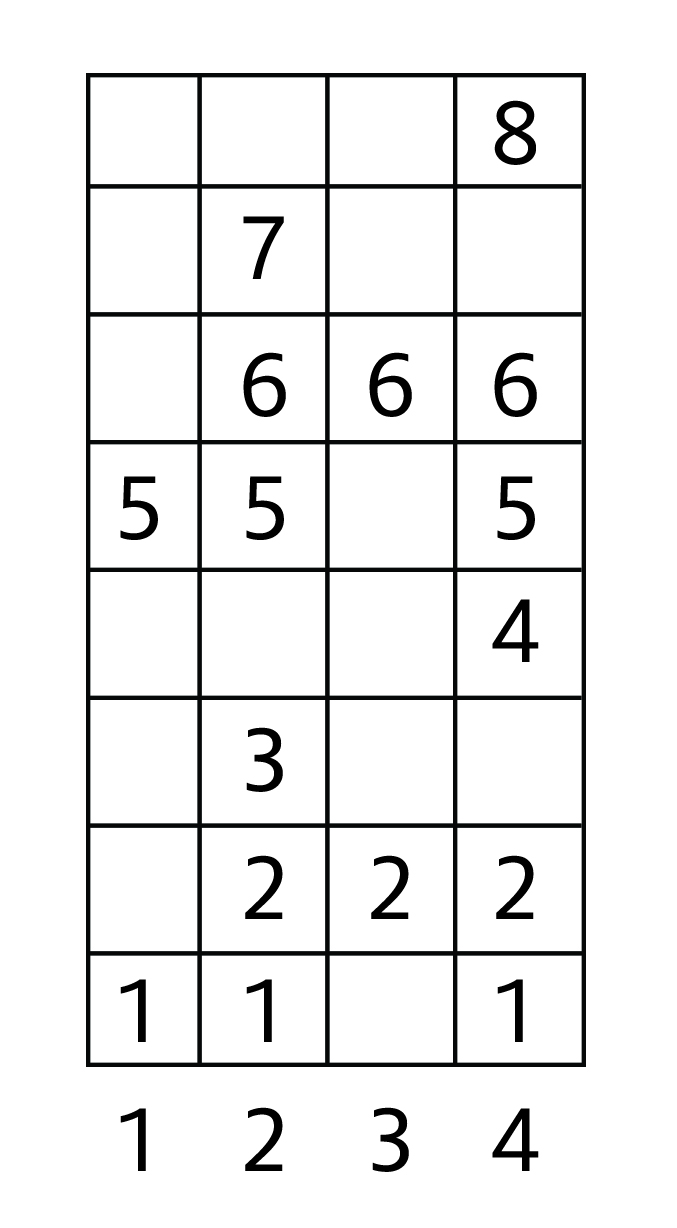
Rearrange the tie-up for weaving the deflected doubleweave pattern on eight treadles, assigning two treadles for each treadling block. Six picks are thrown when weaving with Aurora, four picks with Cocoa. Repeat the treadling 24 times. Weave one more repeat, but end this repeat on Block C (i.e., omit the last Block A). This will complete the deflected doubleweave pattern.
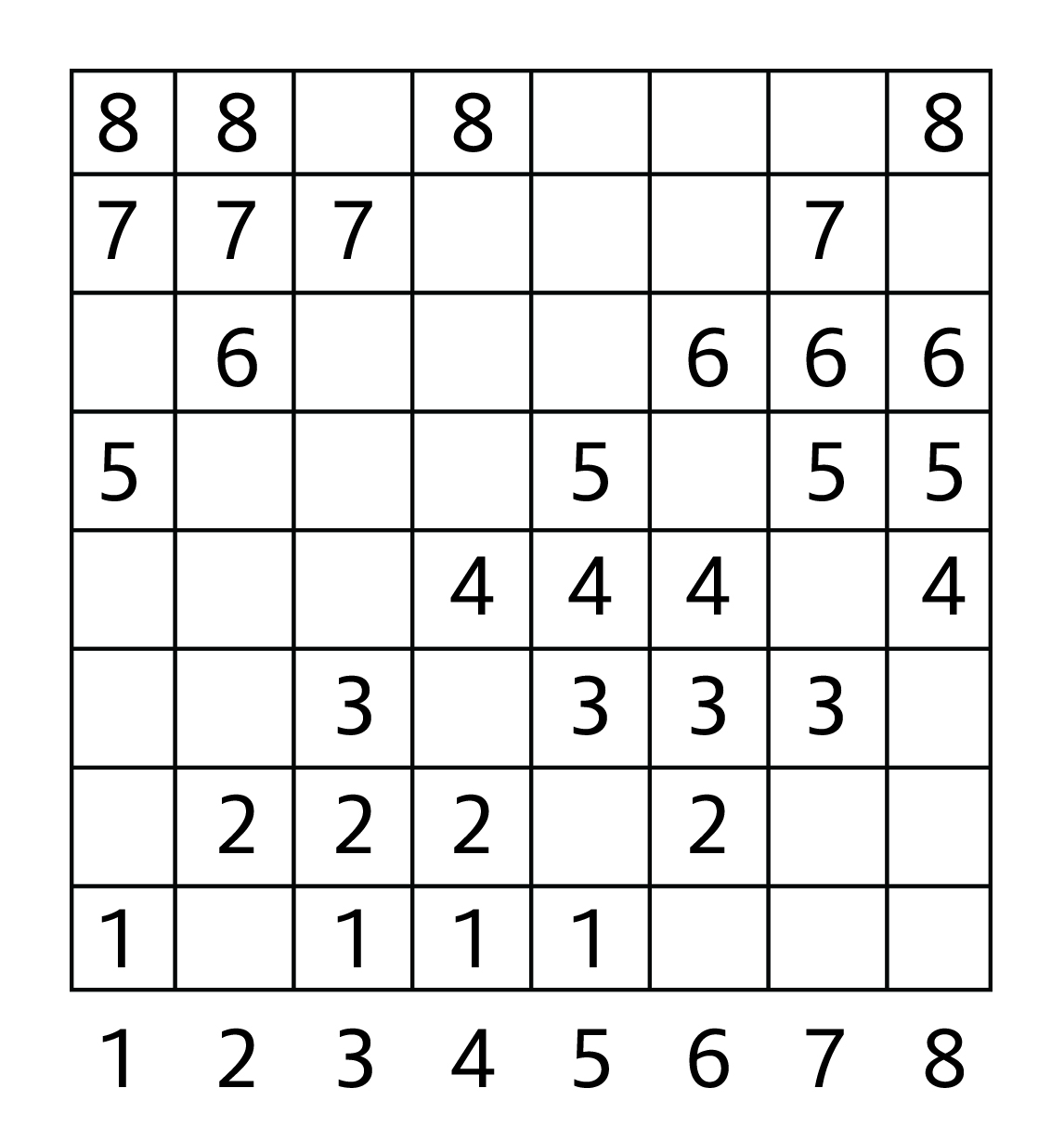
Change the tie-up and rearrange treadles for plainweave. Weave 20 picks of plainweave border with Aurora on top and Cocoa on the back side. Finish weaving by throwing a few picks with waste yarn to hold the weft in place.
Leaving 10" of warp for fringe, cut the fabric off the loom. Trim the fringe ends to 8-1/2" on both ends.
Finishing
- Use a Schacht Fringe Twister to make 11 equally divided twisted fringes on both ends.
- To wet finish, immerse the scarf in tepid water with few drops of wool wash or dish detergent. Rinse gently until the water runs clean. Squeeze out excess water by wrapping the scarf in a thick towel and laying it flat to dry.
- Steam iron gently to take out wrinkles and fluff up the yarn.
Notes
Resources
van der Hoogt, Madelyn. Deflected Doubleweave Handbook. The Weavers’ School, 2015.

